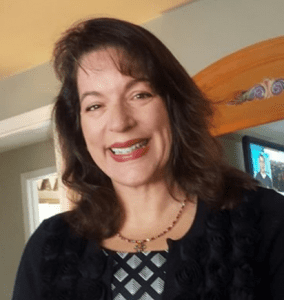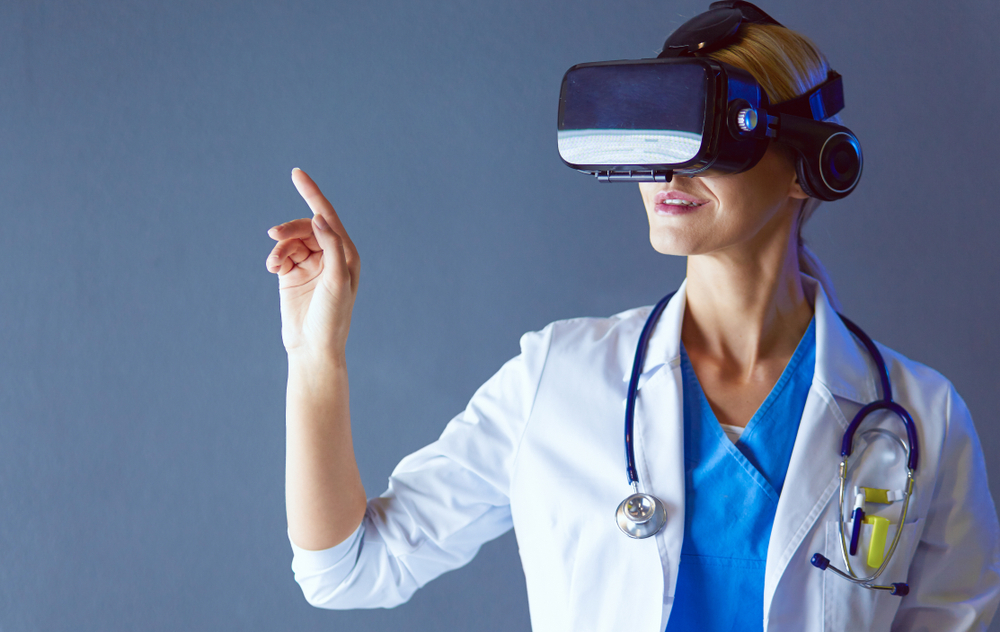From time to time, I receive messages from readers of The Relentless School Nurse blog. I am always touched and inspired when people reach out to share their reflections about a specific blog post. Just a few days ago, I received a letter from Sienna, a reader from the U.K. who asked if I could help her with a very personal goal. She is on a mission to spread the word about the impact of Virtual Reality (VR), and how it has improved her life. You see Sienna has a form of muscular dystrophy that limits her mobility and as she grew into adulthood, impacted her mental health. Sienna was introduced to VR and found that engaging in this technology significantly improved her well-being. She is now on a personal mission to spread the word about VR to others who could benefit from the technology.
This is the message Sienna sent me, I am reprinting it with her permission:
“Hi there! I’m Sienna Fisher, a 25 years old girl from Chichester (England). I was born with a type of muscular dystrophy due to which I was never able to walk on my own. Despite my disability, I had quite an enjoyable life until I got to face my life’s choices in my senior year in high school. My mental health got extremely bad to the point I had to reach out for help from medical professionals. Fortunately, my therapy turned out to be a great success although I still have issues to this day. A few years ago I decided to do something for the community because I believed it would be a booster to my mental health. I’ve taken advantage of the latest Virtual Reality technology for my own disability-related needs and now I want to help others too. I even attended VR nation-wide workshops, seminars, and also a six-month course on VR. For that, I write time to time online articles hoping to reach other individuals who find themselves in my situation and help them overcome their disability-related barriers. I came across your website and I thought you would be a perfect fit for my GOAL. You would help me a lot to achieve the mission of connecting with other disabled people and help them improve the quality of their life. Greetings, Sienna Fisher”
I invited Sienna to write a guest blog post about her experience with VR to share with my readers and help spread her inspiring message:


“Life is difficult. This is a great truth, one of the greatest truths.” This is the opening line of the book “The less traveled road” by Scott Peck. When I first read this back in my senior year in high school I felt a great relief in my heart. Sometimes we forget that everyone out is having their own battle.
At that point in my life, it was essential for me to embrace and remember myself this fact. A few months apart from that day my high school friends would each find their professional and personal way in life. I, on the other hand, was on the brink of depression because I assumed my disability-related barriers are impossible to overcome.
When I was a little baby, my parents were told that I won’t be able to walk on my own. I was born with a type of muscular dystrophy which meant I wouldn’t be able to stand up and walk on my own. In my life, I’ve gone from one doctor to the other and I know a lot about this disease but this is not the point here, therefore I won’t go into detail. I had a relatively happy childhood and for this, I owe a lot to my dear parents. But as I grew older I felt different from the rest and that caused depression. At the end of high school, I had a big mental downgrade to the point I was assigned for a six-month-long anti-depression therapy course.
In 2016 quite occasionally I came across this fancy Virtual Reality video. I was impressed. The technology was officially introduced a few years ago (in 2010 I think) but for me, it was the first time to watch it. This first strong impression led me to a few weeks of persistent online research about this technology. My interest in it got intensified especially when I read about its potential application in helping disabled people like me. I knew that if I would help myself, it would do a world of good to my mental health, the quality of my life and then I could give a hand to other disabled people facing the same struggles. Then I finally decided to attend a sort of pre-university course in this field to gain a little professional expertise and be able to help afterward.
My goal is to provide other disabled people with relevant information that would help them live to a high extent a barrier-free professional and personal life. I want to encourage them to learn about Virtual Reality technology and discover ways how it can help them.
How Can Virtual Reality Help Disabled Students?
Equality is something education must stand for. Our schools have made great progress in this aspect. Anyway, there’s more to be done. Disabled students face still a lot of different problems apart from a customized infrastructure or similar. I know this from my very own experience in school.
So the question is: Can Virtual Reality Technology play a role in tackling this problem? YES, it CAN.
On a major scale and terms Virtual Reality can provide disabled students with:
- Customization
- Inclusion
- Participation
These are three branches of the same tree so to say and they complement each other in this structure.
Customization
Disabled students may have specific needs due to their physical impairments. Let say a student has a partial eyesight loss and in a normal class setting a clear vision of the student is essential for him to understand the material. There are VR goggles and additional gears that enable these students to see clearly. This brings us then to the second point.
Participation
When the student knows what is being talked about in the class from our last example and he/she can engage all his/her senses in the learning process therefore he/she can participate in discussions taking place. This is an essential element for everyone to excel in school.
Inclusion
It is of great importance for a disabled student to feel part of the learning process. When his/her needs are met and he/she can participate equally then of course this is easily achieved.
Many classes, especially those held in laboratories, require certain body movements for an experiment to be performed. I had this problem as a high school student. I would never able to conduct an experiment on my own because sometimes I was supposed to be standing on my own feet or move in a certain way which I couldn’t. So I was only learning about it from what I saw other students were doing. I knew what was going on but I didn’t felt part of it. I didn’t feel any sense of achievement what is a massive turn off for disabled students in career decisions.
Future Prospects
Nobody knows for sure what this technology it’s going to provide us with in the future. However, there are strong reasons to be excited about it. Big role players in this industry seem to be firmly determined to widen the application of this technology, especially in medicine. In years to come, we may see doctors who prescribe VR headsets, and this just unbelievable to think about it. The idea of placing yourself in a future situation that feels profoundly immersive has a massive potential to reveal a lot about our reaction mechanisms which then can help us prepare better for them.

Robin Cogan, MEd, RN, NCSN is a Nationally Certified School Nurse (NCSN), currently in her 20th year as a New Jersey school nurse in the Camden City School District. She serves on several national boards including The American Foundation for Firearm Injury Reduction in Medicine (AFFIRM), a gun violence prevention research non-profit organization and the National Board of Certification for School Nurses (NBCSN). Robin is the Legislative Chair for the New Jersey State School Nurses Association (NJSSNA). She is proud to be a Johnson & Johnson School Health Leadership Fellow and past Program Mentor.
She has been recognized in her home state of New Jersey and nationally for her community-based initiative called “The Community Café: A Conversation That Matters.” Robin is the honored recipient of multiple awards for her work in school nursing and population health. These awards include 2019 National Association of School Nurses (NASN) President’s Award; 2018 NCSN School Nurse of the Year; 2017 Johnson & Johnson School Nurse of the Year; and the New Jersey Department of Health 2017 Population Health Hero Award. Robin serves as faculty in the School Nurse Certificate Program at Rutgers University-Camden School of Nursing, where she teaches the next generation of school nurses. She was presented the 2018 Rutgers University – Camden Chancellor’s Teaching Excellence Award for Part-time Faculty.
Robin writes a weekly blog called The Relentless School Nurse. You can also follow her on Twitter at @RobinCogan.


















